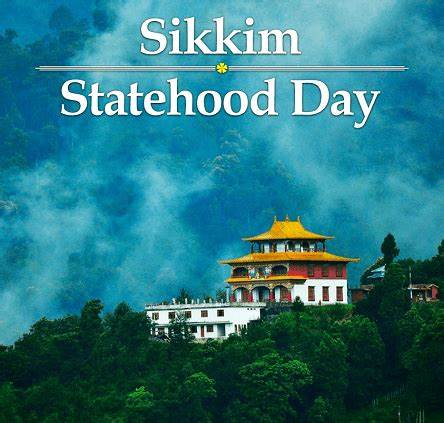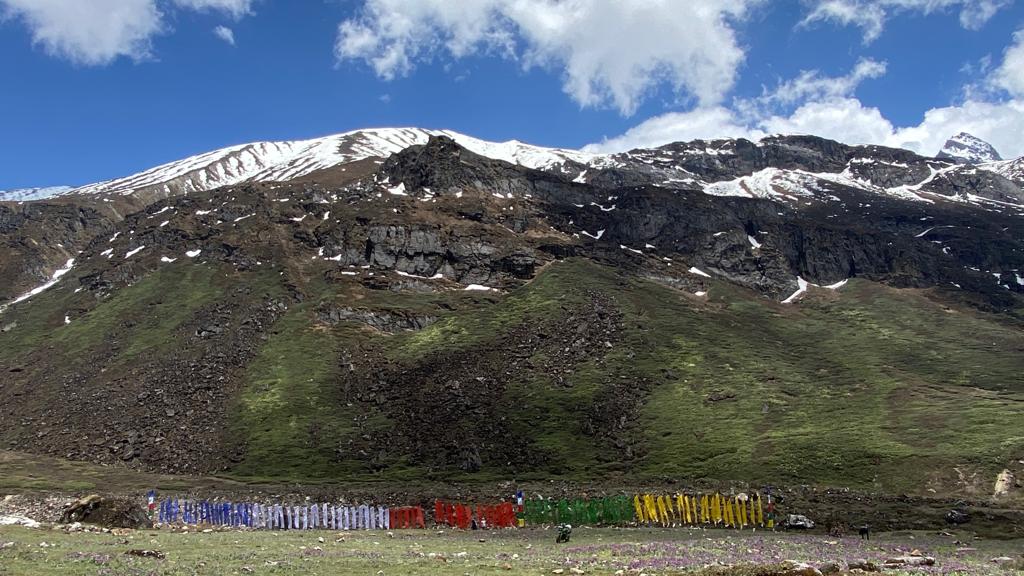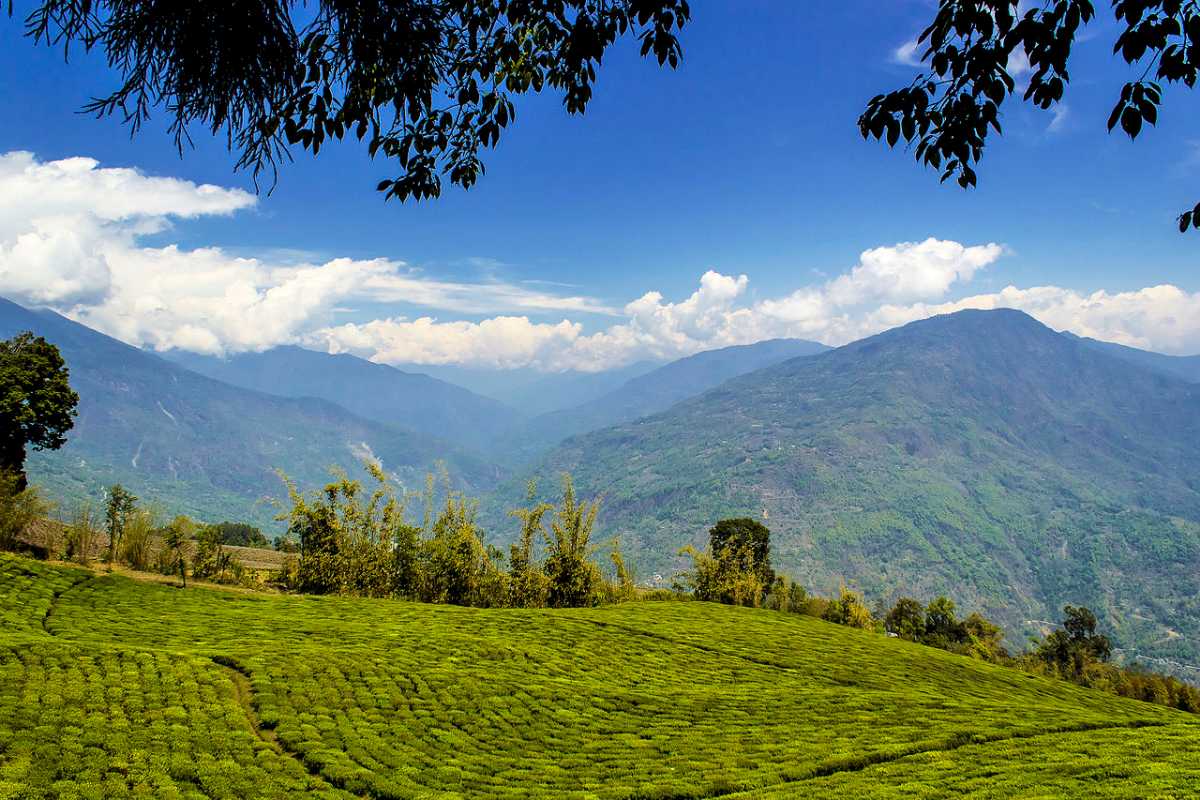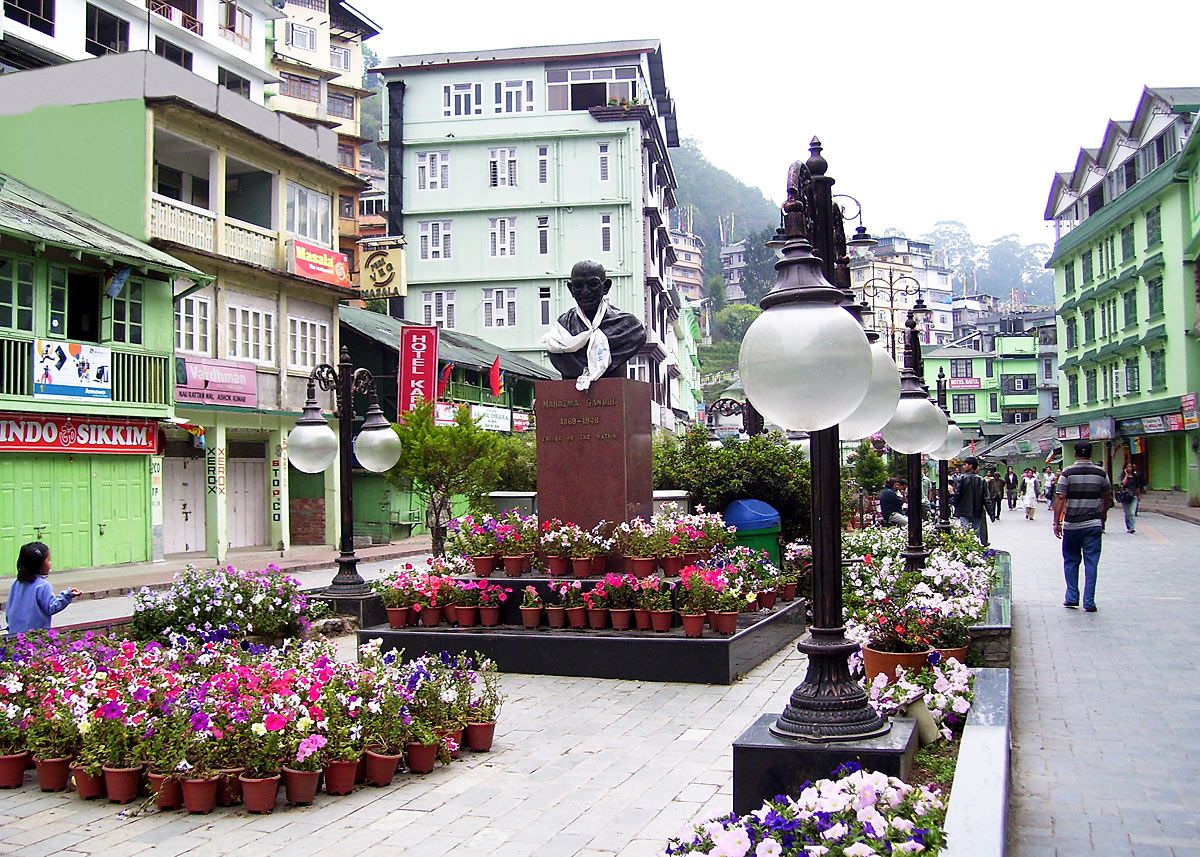"Sikkim Celebrates 49th Statehood Day"
Sikkim celebrates 49th Statehood Day, marking nearly half a century since it became the 22nd state of the Indian Union on May 16, 1975. This day is a momentous occasion, reflecting the state’s journey of growth and development, its rich cultural heritage, and its commitment to sustainable progress. As festivities unfold across the region, locals and visitors alike immerse themselves in the vibrant celebrations, which highlight Sikkim’s unique blend of tradition and modernity.
The Journey to Statehood
Sikkim’s path to statehood is a fascinating chapter in India’s history. Originally an independent kingdom, Sikkim became a protectorate of India in 1950. Over the next two decades, political changes and a series of events culminated in a referendum where the majority of Sikkim’s population voted to join the Indian Union. This significant transition was formalized on May 16, 1975, when Sikkim was officially declared the 22nd state of India.
Celebrations Across the State
The 49th Statehood Day is celebrated with great enthusiasm and pride throughout Sikkim. The day is marked by various events, including cultural performances, parades, and official ceremonies. The capital city of Gangtok becomes a hub of activity, with the Governor, Chief Minister, and other dignitaries participating in the celebrations.
Official Ceremonies and Parades: The day typically begins with an official ceremony attended by state leaders and dignitaries. The event includes hoisting the national flag, delivering speeches that reflect on Sikkim’s achievements, and honoring individuals and organizations that have contributed to the state’s development. Parades featuring school children, police bands, and cultural troupes add to the festive atmosphere.
Cultural Performances: Sikkim’s rich cultural heritage is showcased through a variety of performances, including traditional dances, music, and theatrical presentations. These performances highlight the state’s diverse ethnic communities, such as the Lepchas, Bhutias, and Nepalis, each contributing to Sikkim’s vibrant cultural mosaic.
Exhibitions and Fairs: Various exhibitions and fairs are organized, displaying Sikkim’s progress in different sectors such as agriculture, tourism, and technology. Handicraft stalls, food courts offering local delicacies, and displays of organic farming practices are popular attractions, providing visitors with an insight into the state’s unique lifestyle and achievements.
Sporting Events: To encourage youth participation and celebrate the spirit of Statehood Day, various sporting events and competitions are held. These events range from traditional sports to modern games, fostering a sense of community and pride among the younger generation.
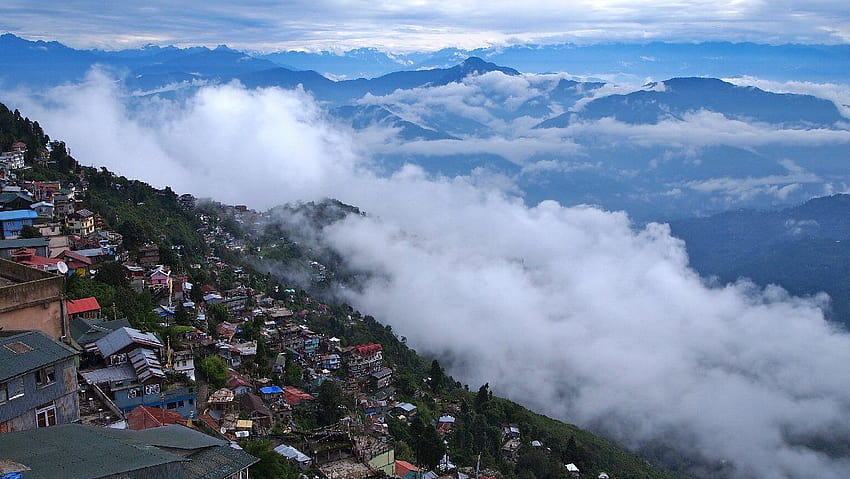
Sikkim Tour Packages: Exploring the Jewel of the Himalayas with Your Tour & Travels
Statehood Day is an ideal time for tourists to experience the beauty and culture of Sikkim. Various tour packages are available that cater to different interests, offering a comprehensive experience of what the state has to offer. Here are some highlights of Sikkim tour packages that visitors can explore with Your Tours & Travels:
Gangtok Delight Package: This package focuses on the capital city, Gangtok, known for its picturesque landscapes and vibrant culture. Highlights include visits to the Enchey Monastery, Ganesh Tok, and the Namgyal Institute of Tibetology. Tourists can also explore the bustling MG Marg, the heart of Gangtok, filled with shops, cafes, and local eateries.
Nature and Adventure Package: For those seeking adventure, this package includes trekking, river rafting, and camping in the pristine environment of Sikkim. Treks to destinations like Goechala, Dzongri, and the Green Lake offer breathtaking views of the Himalayas. Additionally, activities such as paragliding and mountain biking provide an adrenaline rush for thrill-seekers.
Cultural Heritage Package: This package is perfect for tourists interested in Sikkim’s rich cultural heritage. It includes visits to historical sites, monasteries, and villages. Highlights include the Rumtek Monastery, Pemayangtse Monastery, and the historic town of Yuksom, the first capital of Sikkim. Tourists can also experience homestays in traditional villages, providing an authentic glimpse into local life.
Wildlife and Ecology Package: Sikkim is known for its biodiversity and commitment to conservation. This package offers visits to the Khangchendzonga National Park, a UNESCO World Heritage Site, and the Himalayan Zoological Park. Bird-watching tours and nature walks in the forests of Sikkim allow visitors to experience the state’s rich flora and fauna.
Relaxation and Wellness Package: For those looking to unwind, Sikkim’s wellness resorts and spas offer the perfect retreat. This package includes stays in luxury resorts, spa treatments, and visits to hot springs such as the ones in Yumthang Valley and Reshi. The serene environment and natural beauty of Sikkim provide a perfect backdrop for relaxation and rejuvenation.
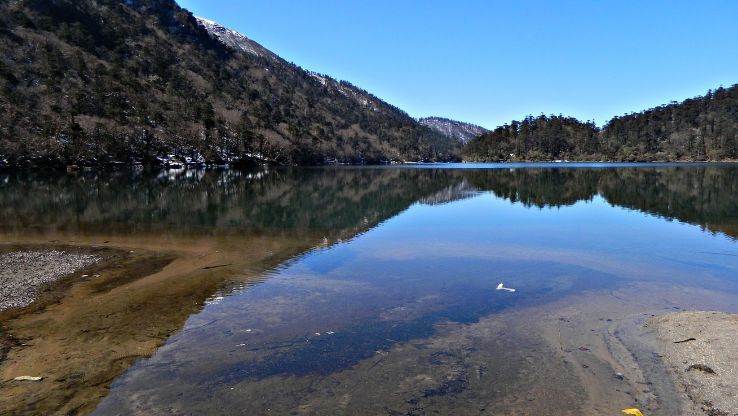
Sustainable Development and Future Prospects
As Sikkim celebrates its 49th Statehood Day, it also reflects on its achievements and sets goals for the future. The state has made significant strides in various fields, especially in sustainable development. Known for being the first fully organic state in India, Sikkim has set a benchmark for environmental conservation and sustainable agriculture.
Organic Farming: Sikkim’s commitment to organic farming has not only improved the quality of produce but also ensured a sustainable environment. The state’s policies and practices serve as a model for other regions aiming to adopt organic farming.
Tourism Development: The tourism sector in Sikkim has seen considerable growth, with the state promoting eco-tourism and responsible travel. Initiatives to improve infrastructure, develop new tourist destinations, and provide better facilities have been instrumental in attracting more visitors while preserving the natural beauty.
Education and Healthcare: Sikkim has made notable progress in education and healthcare. The state government has implemented various programs to improve literacy rates and provide quality healthcare services to its citizens. These efforts contribute to the overall well-being and development of the population.
Infrastructure and Connectivity: Improving infrastructure and connectivity has been a priority for Sikkim. The construction of new roads, bridges, and the expansion of air connectivity through Pakyong Airport have enhanced accessibility to remote areas, fostering economic growth and tourism.
Renewable Energy: Sikkim is exploring renewable energy sources, such as hydropower and solar energy, to reduce its carbon footprint. These initiatives align with the state’s vision of sustainable development and environmental conservation.
Conclusion
Sikkim’s 49th Statehood Day is not just a celebration of its past achievements but also a reflection of its commitment to a prosperous future. The state’s journey over the past 49 years is a testament to the resilience and determination of its people. As Sikkim continues to embrace progress while preserving its cultural heritage and natural beauty, it stands as a shining example of sustainable development.
For tourists, this is a perfect time to explore Sikkim through various tour packages that offer a blend of adventure, culture, and relaxation. As the state gears up for its golden jubilee next year, the spirit of celebration and pride is palpable, promising an even brighter and more prosperous future for Sikkim and its people.
Questions related to Sikkim
- Which is cheaper Darjeeling or Gangtok?
- Accommodation: Both Darjeeling and Gangtok offer a range of accommodation options, from budget guesthouses to luxury hotels. The prices can vary significantly depending on the type of accommodation and its location within the city. Generally, Gangtok may have slightly lower accommodation costs compared to Darjeeling, but this can vary based on factors such as the time of year and specific accommodations.
- Food: Food prices can also vary, but in general, eating out at local restaurants and street food stalls is relatively affordable in both Darjeeling and Gangtok. However, dining at upscale or touristy restaurants can be more expensive.
- Transportation: The cost of transportation between Darjeeling and Gangtok can vary depending on the mode of transport you choose. Shared taxis and buses are common ways to travel between the two cities, and they are usually reasonably priced. However, if you opt for private transportation or hire a car, it will be more expensive.
- Sightseeing and Activities: The cost of sightseeing and activities will depend on your interests and the specific places you want to visit. Both cities offer various attractions, some of which may require entrance fees. Activities like trekking or guided tours will also have their own costs.
- Shopping: Darjeeling and Gangtok are known for their local handicrafts and souvenirs. Prices for these items can vary widely based on their quality and where you purchase them. Bargaining is common in local markets, so you may be able to get better deals with some negotiation skills.
- How to plan Sikkim Darjeeling tour?
- Set a Budget:
- Determine how much you're willing to spend on your trip. This will help you make choices regarding accommodations, transportation, and activities.
- Decide on the Duration:
- Decide how many days you want to spend in Sikkim and Darjeeling. A typical itinerary is around 7-10 days, but you can adjust based on your preferences.
- Research and Create an Itinerary:
- Research the places you want to visit in Sikkim and Darjeeling. Common attractions include Gangtok, Pelling, Tsomgo Lake, Nathula Pass, Darjeeling, and Tiger Hill.
- Create a rough itinerary, allocating days to each location and activity. Make sure to include travel time between destinations.
- Plan the Best Time to Visit:
- Consider the weather when planning your trip. The best time to visit is typically from March to June and from September to November when the weather is pleasant.
- Book Flights and Accommodations:
- Book your flights to Bagdogra Airport (IXB) or nearest airport, depending on your point of entry.
- Reserve accommodations in advance, especially during the peak tourist season. Choose hotels, guesthouses, or homestays that fit your budget and preferences.
- Arrange Transportation:
- Decide on how you will travel between destinations. Options include hiring a private cab, using public buses, or renting a car.
- Consider hiring a local guide for certain activities or treks to make the most of your experience.
- Obtain Necessary Permits:
- Check if you need permits for specific areas, such as Nathula Pass. These permits can be obtained through the local tourism department or your travel agency.
- Pack Accordingly:
- Pack clothing suitable for the weather during your visit. Layers are advisable due to temperature variations.
- Don't forget essential items like comfortable walking shoes, medications, and necessary documents.
- Plan Activities and Tours:
- Research and book activities and tours in advance, such as trekking, river rafting, or tea estate visits.
- Check for any cultural festivals or events happening during your visit that you might want to attend.
- Learn About Local Culture:
- Familiarize yourself with the local customs, traditions, and etiquette to show respect to the local people.
- Be Flexible:
- Be prepared for changes in plans due to unforeseen circumstances like weather conditions. Have a backup plan for such situations.
- Stay Informed About COVID-19 Guidelines:
- Keep track of any travel restrictions, health protocols, and safety guidelines related to COVID-19 that may apply during your visit.
- Travel Insurance:
- Consider purchasing travel insurance to cover unexpected emergencies or trip cancellations.
- Enjoy Your Trip:
- Finally, relax, enjoy the breathtaking scenery, and immerse yourself in the culture and beauty of Sikkim and Darjeeling.
- Set a Budget:
- Sikkim and Gangtok same?Sikkim and Gangtok are not the same, but they are closely related. Sikkim is a state in northeastern India, while Gangtok is the capital and largest town of Sikkim. Here's a bit more detail about each:
- Sikkim:
- Sikkim is a state located in the northeastern part of India, nestled in the eastern Himalayas.
- It is known for its stunning natural beauty, including lush green valleys, snow-capped peaks, pristine lakes, and dense forests.
- Sikkim is one of the smallest states in India by land area but is rich in biodiversity and cultural diversity.
- The state offers a wide range of attractions and activities, including trekking, mountaineering, wildlife viewing, and visits to monasteries and historical sites.
- Sikkim shares its borders with Tibet (China) to the north, Bhutan to the east, Nepal to the west, and the Indian state of West Bengal to the south.
- Gangtok:
- Gangtok is the capital and largest town in Sikkim.
- It serves as the political, cultural, and economic center of the state.
- Gangtok is situated in the eastern part of Sikkim and is known for its scenic beauty and pleasant climate.
- The town is surrounded by the Himalayan ranges and offers breathtaking views of the mountains.
- Gangtok is a popular tourist destination and serves as a gateway for travelers exploring various parts of Sikkim.
- It has a mix of modern amenities and traditional charm, with attractions like monasteries, markets, and viewpoints.
- Sikkim:
- How many days required to visit Gangtok?The number of days required to visit Gangtok can vary depending on your interests, the specific places you want to explore in and around Gangtok, and your travel pace. However, a typical itinerary for Gangtok usually ranges from 2 to 4 days. Here's a general guideline for how you can plan your time in Gangtok:
- 2 Days in Gangtok:
- If you have limited time, you can spend a quick two days in Gangtok to see some of its major attractions. This would involve a somewhat rushed schedule but can give you a taste of the town.
- Day 1: Explore the city center, visit attractions like MG Marg (the main market), Enchey Monastery, and Hanuman Tok.
- Day 2: Take a day trip to the nearby attractions, such as Rumtek Monastery, Banjhakri Falls, and the Namgyal Institute of Tibetology.
- 3 Days in Gangtok:
- Spending three days in Gangtok allows for a more relaxed experience, and you can explore additional places.
- Day 1 and Day 2: Follow the itinerary for a 2-day trip, as mentioned above.
- Day 3: Visit the Tsomgo Lake and Baba Mandir (if they are open to tourists; permits are required), or you can explore more of Gangtok's local culture and cuisine.
- 4 Days or More:
- With four or more days in Gangtok, you can explore the town at a leisurely pace and also consider nearby destinations like Nathula Pass and Changu Lake.
- Day 1 and Day 2: Follow the itinerary for a 2-day trip in Gangtok.
- Day 3: Visit Tsomgo Lake and Baba Mandir (if you haven't already) or explore nearby areas like Tashi Viewpoint, Ganesh Tok, or the Flower Exhibition Centre.
- Day 4: Take a day trip to Nathula Pass (if it's open to tourists during your visit; permits are required), which is a high-altitude border pass with China. You can also visit Changu Lake on the way.
- 2 Days in Gangtok:
- What is the best time to visit Sikkim?The best time to visit Sikkim depends on your preferences and the experiences you seek. Sikkim offers different attractions and experiences throughout the year due to its diverse geography and varying climates. Here are the main seasons and their characteristics:
- Spring (March to May):
- Spring is one of the most popular times to visit Sikkim. The weather is pleasant, and the region's flora comes alive with blooming rhododendrons, orchids, and other flowers.
- This is an ideal time for trekking and outdoor activities. Many trekking routes are accessible, and you can enjoy clear views of the Himalayan peaks.
- Temperatures during spring are comfortable, with daytime temperatures ranging from 15°C to 25°C (59°F to 77°F).
- Summer (June to August):
- Summer in Sikkim is the monsoon season, characterized by heavy rainfall. The region is lush and green during this time, but it can be challenging for outdoor activities due to rain and landslides.
- While some tourists avoid this season, it's a great time for those interested in observing the vibrant landscapes and experiencing the local culture.
- Be prepared for occasional road closures and disruptions in transportation during heavy rains.
- Autumn (September to November):
- Autumn is another excellent time to visit Sikkim. The monsoon rains have subsided, leaving behind clear skies and lush landscapes.
- The weather is cool and comfortable, making it perfect for sightseeing, trekking, and other outdoor activities.
- Autumn is also the harvest season, and you can witness local festivals and cultural events.
- Clear views of the Himalayan peaks can be enjoyed during this season.
- Winter (December to February):
- Winter in Sikkim is cold, with temperatures dropping significantly, especially at higher altitudes. In Gangtok, daytime temperatures may range from 5°C to 15°C (41°F to 59°F).
- This is a great time for travelers who enjoy the charm of snowy landscapes and fewer crowds.
- Many high-altitude areas may be covered in snow, making it ideal for winter sports like skiing in areas like Yumthang Valley.
- Some high-altitude passes like Nathula Pass may be closed due to heavy snowfall.
- Spring (March to May):
- Which is colder Sikkim or Darjeeling?Sikkim, as a state, encompasses various elevations and climates, so the temperature can vary depending on the specific location and time of year. In general, Sikkim has a wide range of temperatures, from subtropical in the lower regions to alpine in the higher areas. Darjeeling, on the other hand, is known for its cooler climate due to its higher elevation. It's a hill station located at an altitude of around 6,700 feet (2,042 meters) above sea level, and its climate is considered more temperate compared to many parts of Sikkim. In terms of general temperature comparisons:
- Darjeeling: Darjeeling tends to be cooler than the lower-altitude areas of Sikkim. Summers in Darjeeling are mild, with daytime temperatures ranging from 15°C to 20°C (59°F to 68°F). Winters are colder, with temperatures dropping to around 2°C to 7°C (36°F to 45°F). It can occasionally experience snowfall during the winter months.
- Sikkim: The temperatures in Sikkim can vary widely based on the elevation. In places like Gangtok (the capital of Sikkim) at a lower elevation, the temperatures are milder and more moderate, similar to Darjeeling. However, in higher-altitude areas of Sikkim, such as Lachung, Lachen, or areas around Nathula Pass, temperatures can be significantly colder, especially during the winter months, often dropping below freezing.
- Does Gangtok have snow?Yes, Gangtok, the capital and largest town of Sikkim, does receive snowfall, but it typically occurs during the winter months. Gangtok is situated at an elevation of approximately 5,410 feet (1,650 meters) above sea level, which means that while it does experience cold weather in the winter, it doesn't receive heavy or prolonged snowfall like higher-altitude areas in Sikkim. Here's what you can expect regarding snowfall in Gangtok:
- Winter Snowfall: Gangtok may experience occasional light snowfall during the winter months, particularly in December, January, and February. However, the snowfall in Gangtok is usually not heavy, and it may not accumulate significantly on the ground.
- Snow-Covered Surroundings: While Gangtok itself may not be covered in deep snow, the surrounding areas at higher elevations, such as Tsomgo Lake (Changu Lake), Nathula Pass, and higher mountain regions, often receive more substantial snowfall and can provide a snowy landscape during the winter.
- Road Closures: When there is snowfall, especially in the higher regions of Sikkim, it can lead to temporary road closures, including the Nathula Pass route, due to safety concerns. It's important to check road conditions and any travel advisories if you plan to visit these areas during the winter.
- Can we cover Sikkim in 4 days?Covering the entire state of Sikkim in just 4 days would be quite challenging and rushed, given the diverse attractions and landscapes it offers. Sikkim is known for its stunning natural beauty, cultural heritage, and various places of interest, so it's best explored at a more leisurely pace to fully appreciate what it has to offer. However, if you have only 4 days and want to see some of the highlights, here's a very basic itinerary you could consider: Day 1: Arrival in Gangtok
- Arrive at Bagdogra Airport or New Jalpaiguri Railway Station and proceed to Gangtok.
- Explore Gangtok's city center, including MG Marg and local markets.
- Visit attractions in and around Gangtok, such as Enchey Monastery, Hanuman Tok, and Tashi Viewpoint.
- Explore local culture and cuisine.
- Take a day trip to Tsomgo Lake (Changu Lake) and Baba Harbhajan Singh Mandir.
- Enjoy the scenic beauty of the lake and surrounding areas.
- Depending on your departure time, you can either explore more of Gangtok or head back to the airport or railway station for your onward journey.
Table of Contents
Toggle

